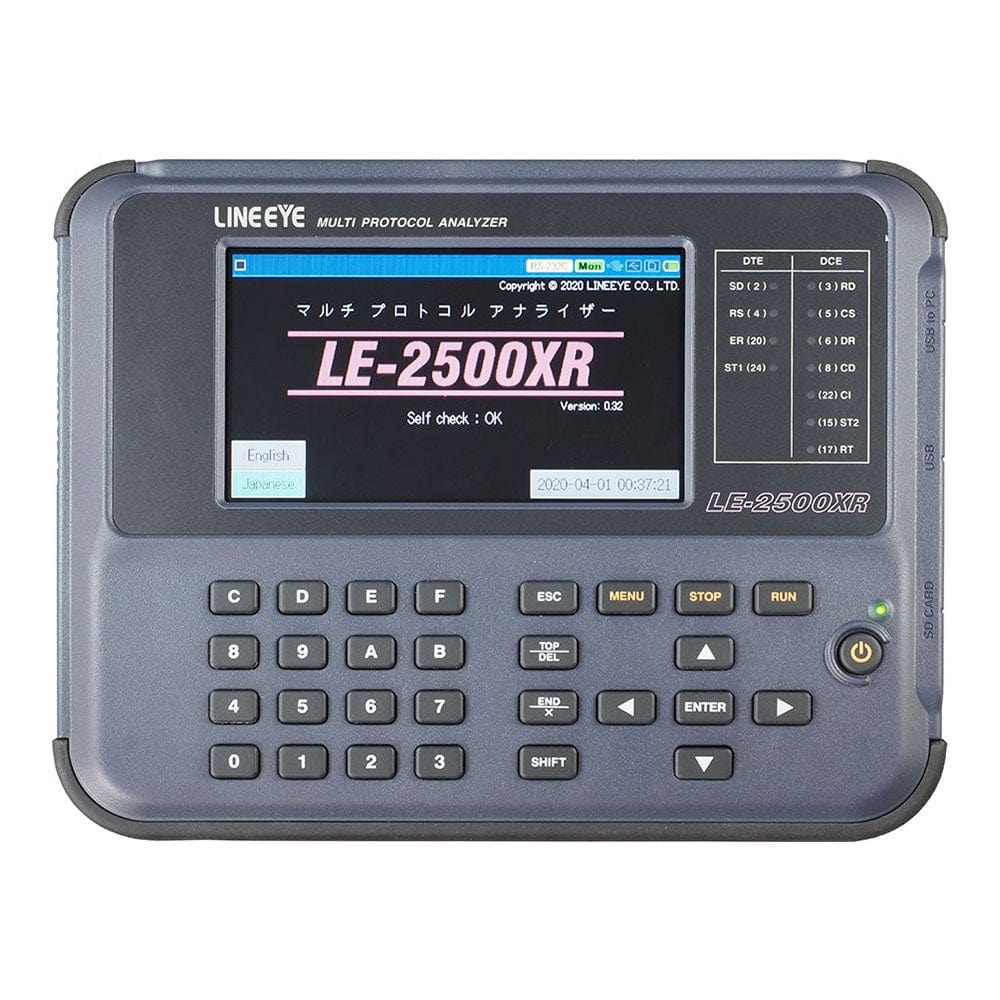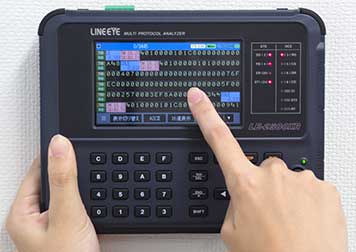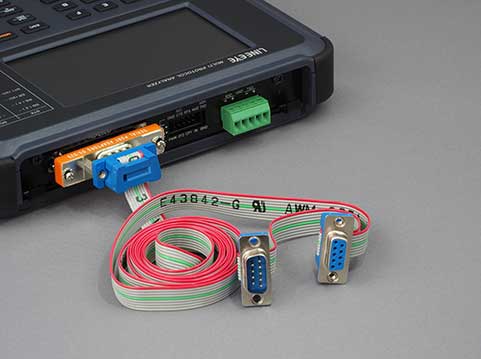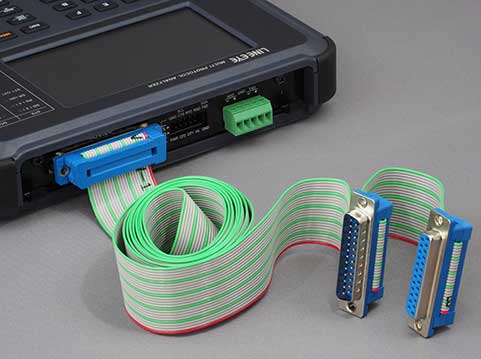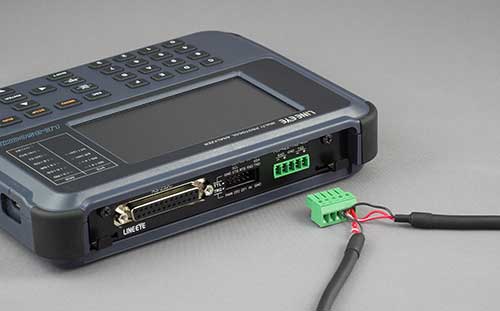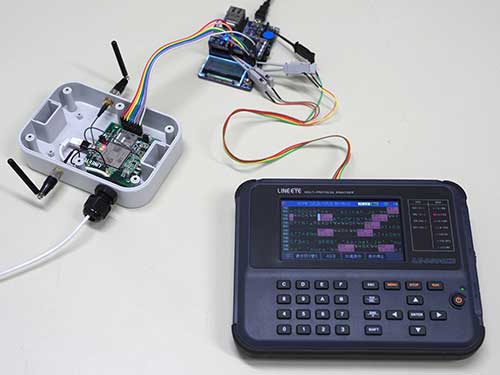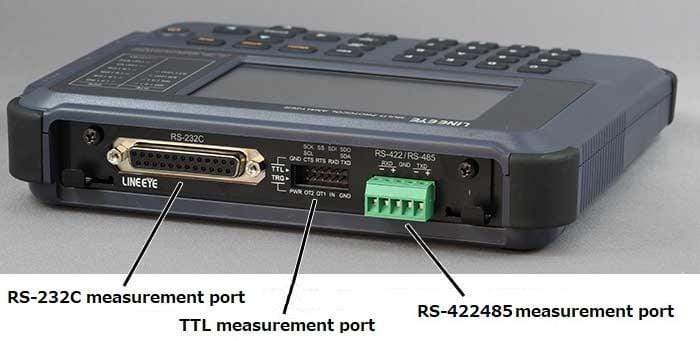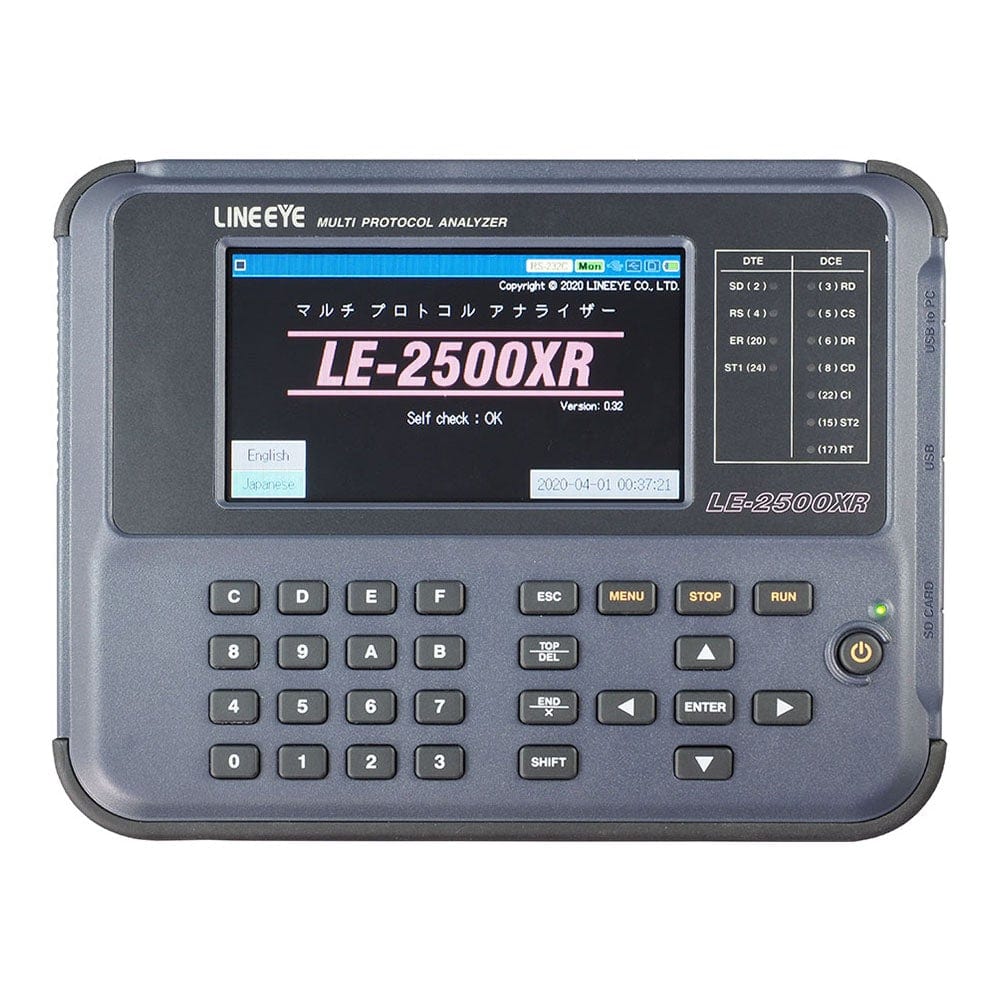
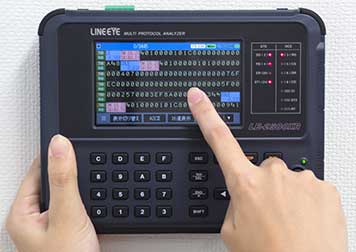
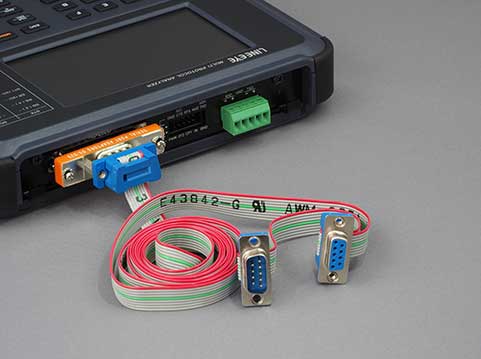
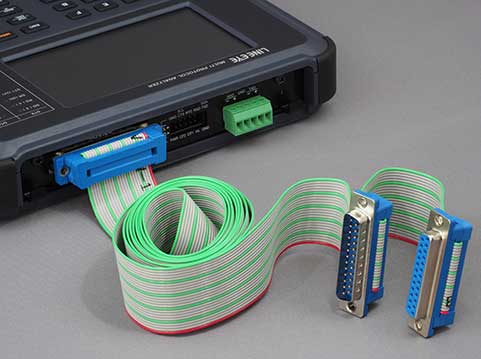
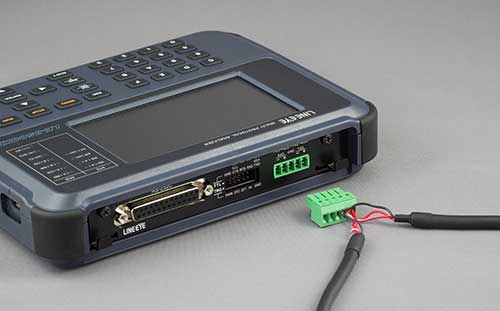
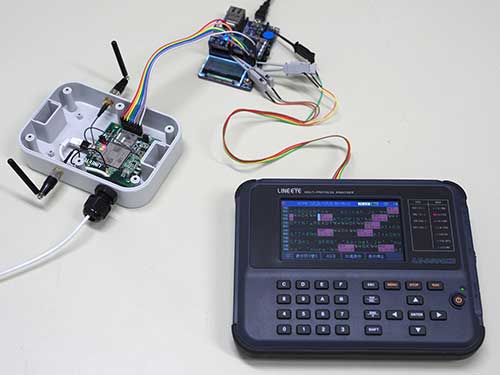
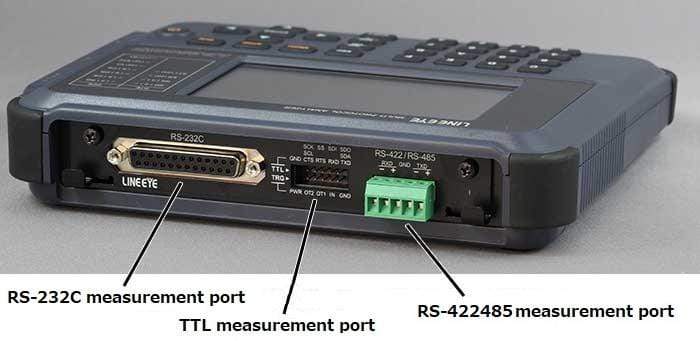
Overview
The Lineeye LE-2500XR-E is a standard model of a stand-alone communication protocol analyzer which has a touch panel colour display and adopted lithium-ion battery while inheriting all the functions of the conventional model LE-2500/LE-2500R which have the monitor function, simulation function, and bit error rate test function necessary for communication analysis test.
Le Lineeye LE-2500XR-E est un modèle standard d'un analyseur de protocole de communication autonome doté d'un écran couleur tactile et d'une batterie lithium-ion adoptée tout en héritant de toutes les fonctions du modèle conventionnel LE-2500/LE-2500R qui possède la fonction de surveillance, la fonction de simulation et la fonction de test de taux d'erreur binaire nécessaires au test d'analyse de communication.
| General Information | |
|---|---|
Part Number (SKU) |
LE-2500XR-E
|
Manufacturer |
|
| Other | |
Warranty |
|
Country of Origin |
|
HS Code Customs Tariff code
|
|
EAN |
5055383628834
|
Frequently Asked Questions
Have a Question?
Be the first to ask a question about this.

